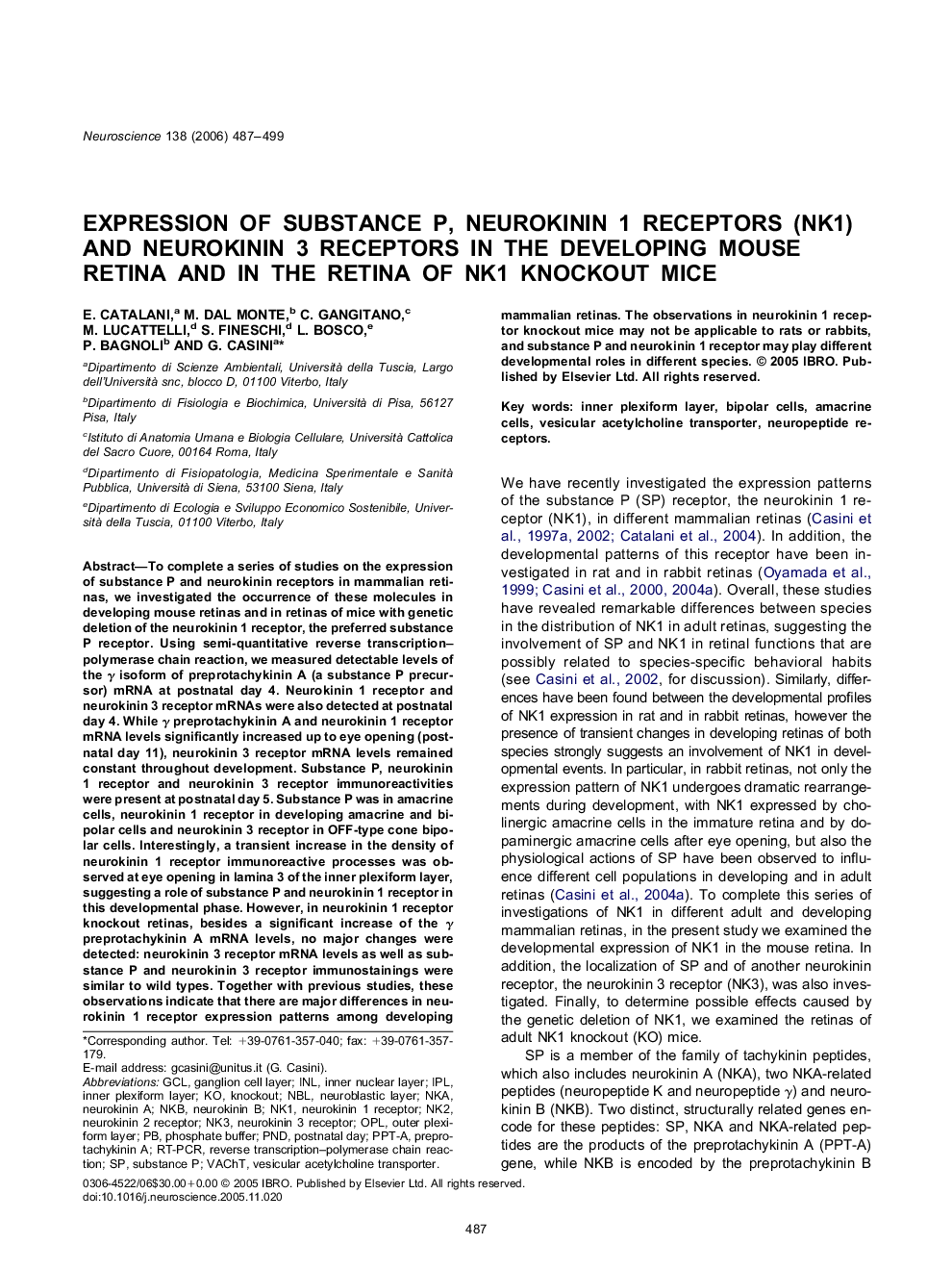| Article ID | Journal | Published Year | Pages | File Type |
|---|---|---|---|---|
| 4342495 | Neuroscience | 2006 | 13 Pages |
To complete a series of studies on the expression of substance P and neurokinin receptors in mammalian retinas, we investigated the occurrence of these molecules in developing mouse retinas and in retinas of mice with genetic deletion of the neurokinin 1 receptor, the preferred substance P receptor. Using semi-quantitative reverse transcription–polymerase chain reaction, we measured detectable levels of the γ isoform of preprotachykinin A (a substance P precursor) mRNA at postnatal day 4. Neurokinin 1 receptor and neurokinin 3 receptor mRNAs were also detected at postnatal day 4. While γ preprotachykinin A and neurokinin 1 receptor mRNA levels significantly increased up to eye opening (postnatal day 11), neurokinin 3 receptor mRNA levels remained constant throughout development. Substance P, neurokinin 1 receptor and neurokinin 3 receptor immunoreactivities were present at postnatal day 5. Substance P was in amacrine cells, neurokinin 1 receptor in developing amacrine and bipolar cells and neurokinin 3 receptor in OFF-type cone bipolar cells. Interestingly, a transient increase in the density of neurokinin 1 receptor immunoreactive processes was observed at eye opening in lamina 3 of the inner plexiform layer, suggesting a role of substance P and neurokinin 1 receptor in this developmental phase. However, in neurokinin 1 receptor knockout retinas, besides a significant increase of the γ preprotachykinin A mRNA levels, no major changes were detected: neurokinin 3 receptor mRNA levels as well as substance P and neurokinin 3 receptor immunostainings were similar to wild types. Together with previous studies, these observations indicate that there are major differences in neurokinin 1 receptor expression patterns among developing mammalian retinas. The observations in neurokinin 1 receptor knockout mice may not be applicable to rats or rabbits, and substance P and neurokinin 1 receptor may play different developmental roles in different species.
